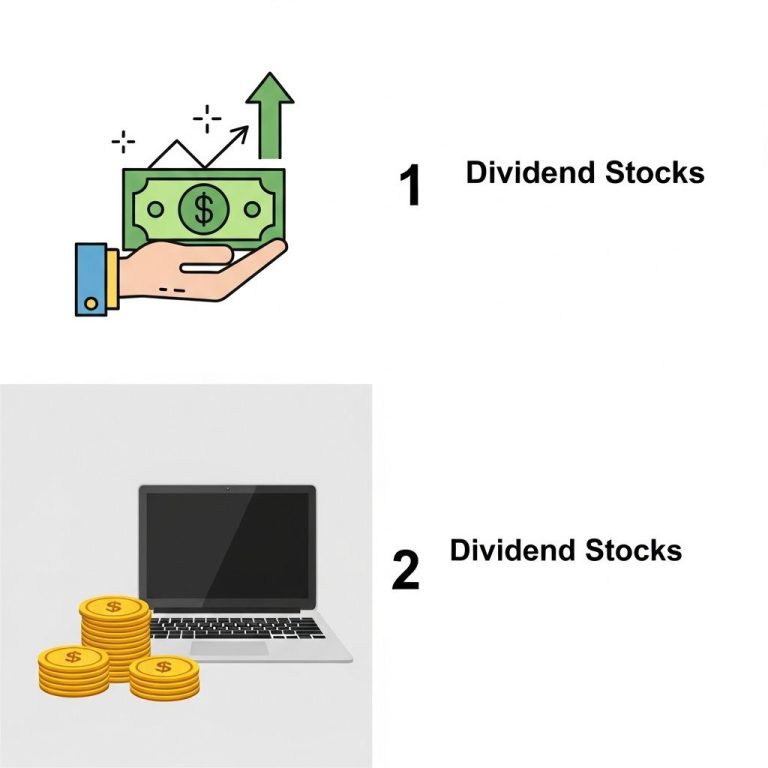In an ever-evolving financial landscape, the pursuit of passive income has become a hot topic among investors and entrepreneurs alike. With the right strategies, generating revenue without the constant grind of traditional employment is not only possible, but it can also lead to financial independence and security. As we look ahead to 2025, it’s essential to explore innovative methods to unlock wealth through passive income streams.
Understanding Passive Income
Passive income is defined as earnings derived from ventures in which a person is not actively involved. This contrasts with active income, which is earned from working for a company or completing a job. Passive income can come from various sources, including investments, rental income, and online businesses.
Why Pursue Passive Income?
- Financial freedom: Gain the ability to live without relying solely on a paycheck.
- Time flexibility: Spend time on hobbies, family, or new ventures without financial stress.
- Diversification: Reduce risk by having multiple income sources.
Emerging Passive Income Strategies for 2025
As we approach 2025, several emerging strategies will shape the way individuals can earn passive income. Below are some noteworthy methods to consider.
1. Real Estate Crowdfunding
Real estate has long been a favored asset for generating passive income, but traditional investment requires significant capital and management skills. Crowdfunding platforms allow investors to pool resources and invest in real estate projects.
- Pros:
- Low barrier to entry
- Diversification across multiple properties
- Potential for high returns
- Cons:
- Less control over investments
- Market risk
- Fees associated with platforms
2. Dividend Stocks
Investing in dividend-paying stocks can be a lucrative option for passive income. Companies that consistently pay dividends often exhibit strong financial health, making them a stable income source.
| Company | Dividend Yield (%) | Market Cap ($ Billion) |
|---|---|---|
| Apple Inc. | 0.56 | 2,500 |
| Coca-Cola Co. | 3.09 | 250 |
| Procter & Gamble Co. | 2.35 | 350 |
3. Peer-to-Peer Lending
Peer-to-peer lending allows individuals to lend money directly to others through online platforms, cutting out the financial institution as the middleman. Investors earn interest on the loans, creating a passive income stream.
- Choose a reputable platform.
- Assess borrower risk grades.
- Diversify loans to mitigate risk.
Leveraging Technology for Passive Income
With technological advancements, creating passive income has never been easier. Here are some tech-savvy strategies to explore:
4. Creating and Selling Online Courses
If you possess expertise in a particular field, consider developing an online course. Platforms like Udemy and Teachable allow you to monetize your knowledge.
- Tips for success:
- Identify a niche market.
- Create high-quality content.
- Market through social media and email campaigns.
5. Affiliate Marketing
Through affiliate marketing, you can earn a commission by promoting products or services. By utilizing blogs, social media, or websites, individuals can generate passive income by driving traffic to affiliate offers.
- Choose a niche that aligns with your interests.
- Build a platform (blog, website, etc.).
- Join affiliate programs related to your niche.
Investing in Cryptocurrencies
Cryptocurrencies have become an integral part of modern investment strategies. Beyond mere trading, there are passive income opportunities within the crypto space, such as:
6. Staking
Staking involves holding a cryptocurrency in a wallet to support the network operations. In return, stakers receive rewards, providing a source of passive income.
7. Yield Farming
Similar to staking, yield farming allows investors to earn interest on their cryptocurrency holdings by lending them out on decentralized finance (DeFi) platforms.
Traditional Passive Income Sources
It’s important not to overlook traditional methods of generating passive income. These tried and true strategies can still provide substantial returns.
8. Rental Properties
Investing in rental properties can yield a stable income stream. Consider options such as:
- Residential properties
- Commercial real estate
- Vacation rentals
9. Bonds
Bonds remain a safe investment choice that can provide a steady stream of income. Consider government or corporate bonds that pay regular interest.
Building a Passive Income Portfolio
It’s essential to build a diversified portfolio to mitigate risk and maximize potential income. Here’s how to get started:
10. Assess Your Financial Situation
Before diving into passive income strategies, evaluate your current financial standing:
- Net worth
- Monthly expenses
- Current investments
11. Set Clear Goals
Define what you want to achieve with passive income:
- Retirement savings
- Supplementing current income
- Funding a lifestyle change
12. Monitor and Adjust
Continuously track your investments and adjust your strategies as needed. The financial landscape can shift rapidly, making flexibility key to long-term success.
Conclusion
As we approach 2025, the landscape for generating passive income is rich with opportunities. By leveraging technology, investing wisely, and being open to new methods, anyone can create sustainable income streams that lead to financial freedom. Remember that building wealth takes time and patience, but with the right strategies, you can unlock the doors to a more prosperous future.
FAQ
What are passive income strategies?
Passive income strategies are methods to earn money with minimal ongoing effort, allowing you to generate revenue while focusing on other pursuits.
What are some popular passive income strategies for 2025?
Popular passive income strategies for 2025 include investing in real estate, dividend stocks, peer-to-peer lending, creating digital products, and starting a blog or YouTube channel.
How can I start earning passive income in 2025?
To start earning passive income in 2025, assess your financial situation, research various strategies, and choose the one that aligns with your interests and risk tolerance.
Is passive income truly ‘passive’?
While passive income requires less ongoing effort than traditional income, it often involves initial work, investment, and occasional maintenance to keep generating revenue.
What are the tax implications of passive income?
The tax implications of passive income vary by jurisdiction, but generally, it may be subject to different tax rates compared to earned income, so consulting a tax professional is advisable.
Can anyone create passive income streams?
Yes, anyone can create passive income streams, but success often depends on careful planning, investment, and a willingness to learn about various income-generating opportunities.




